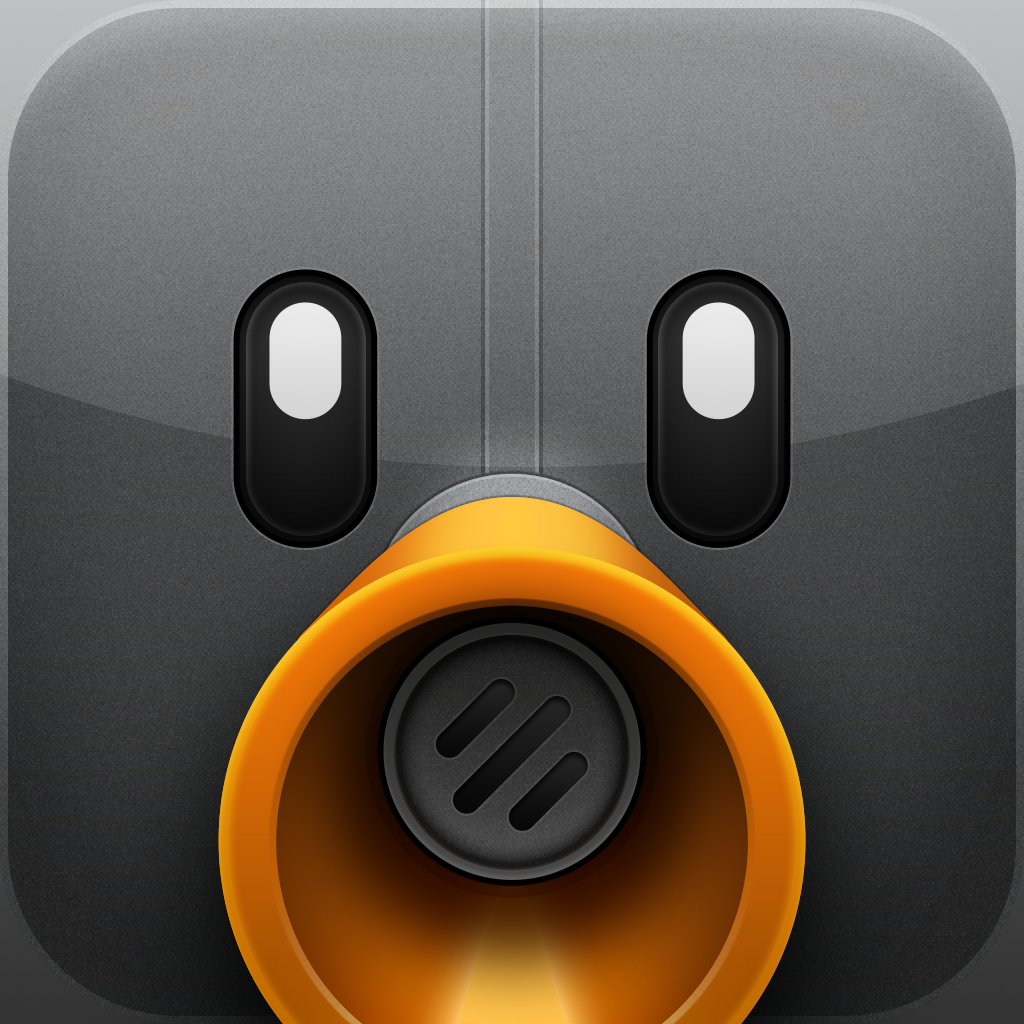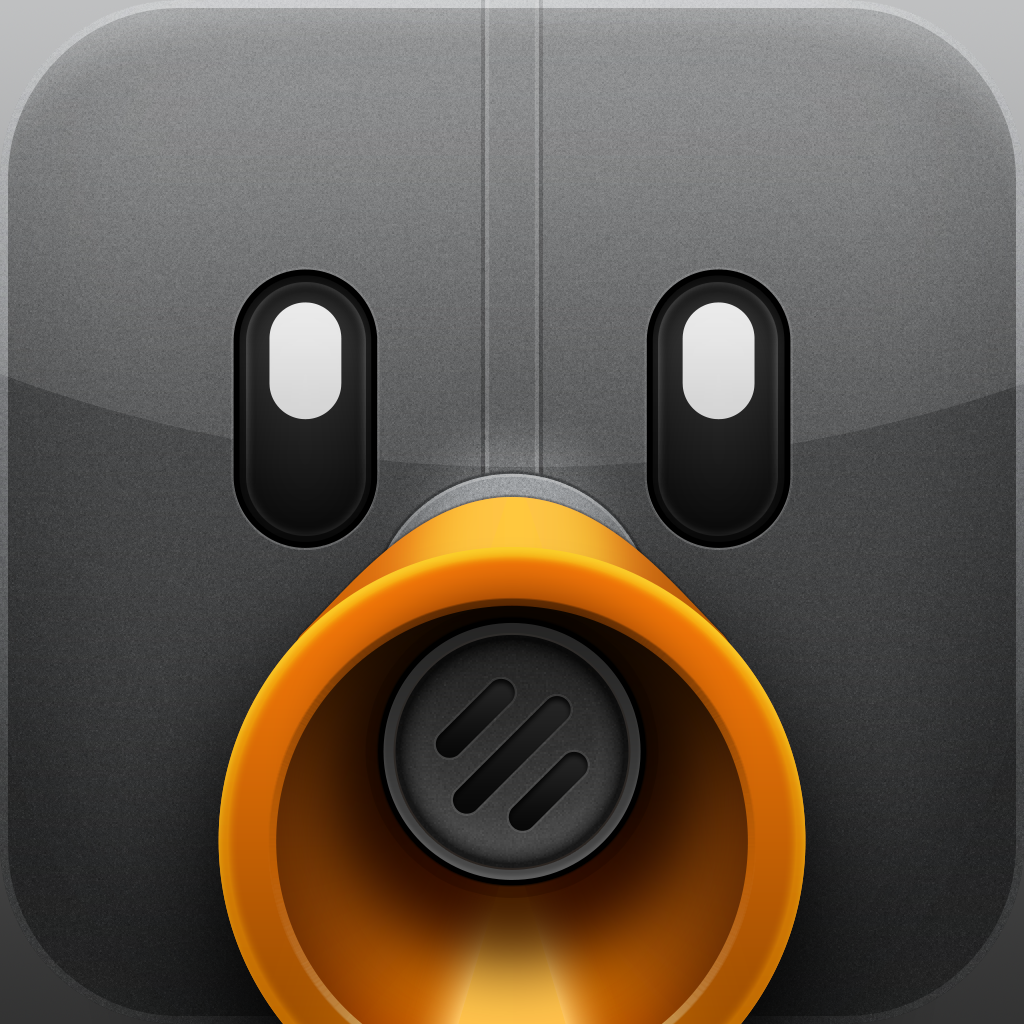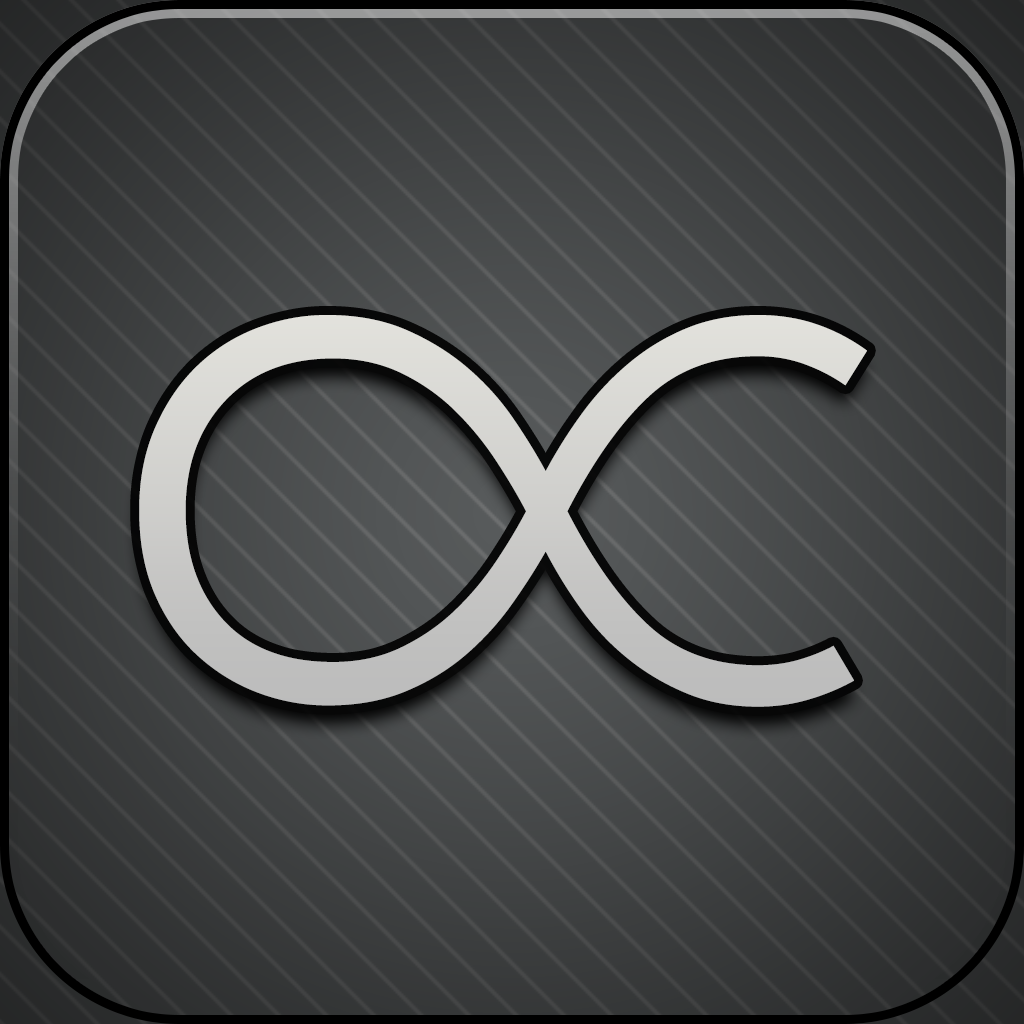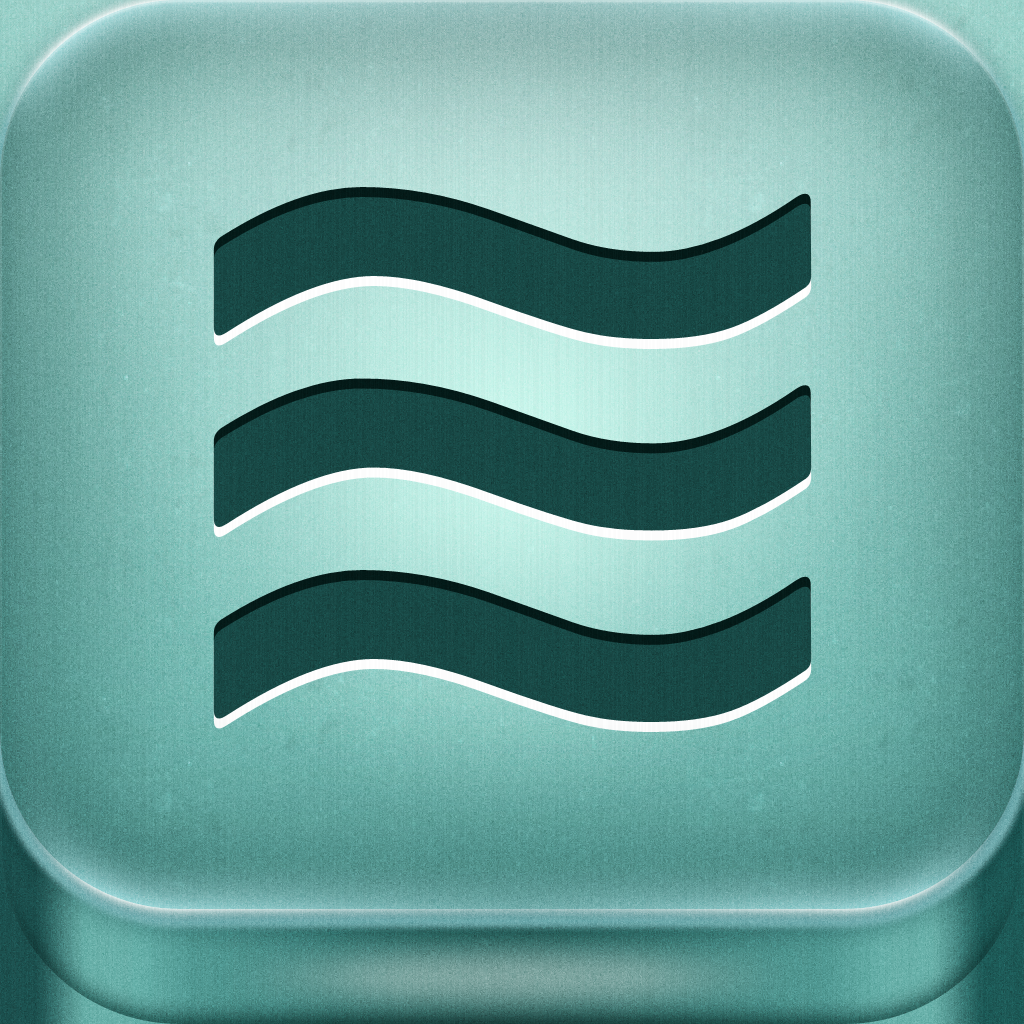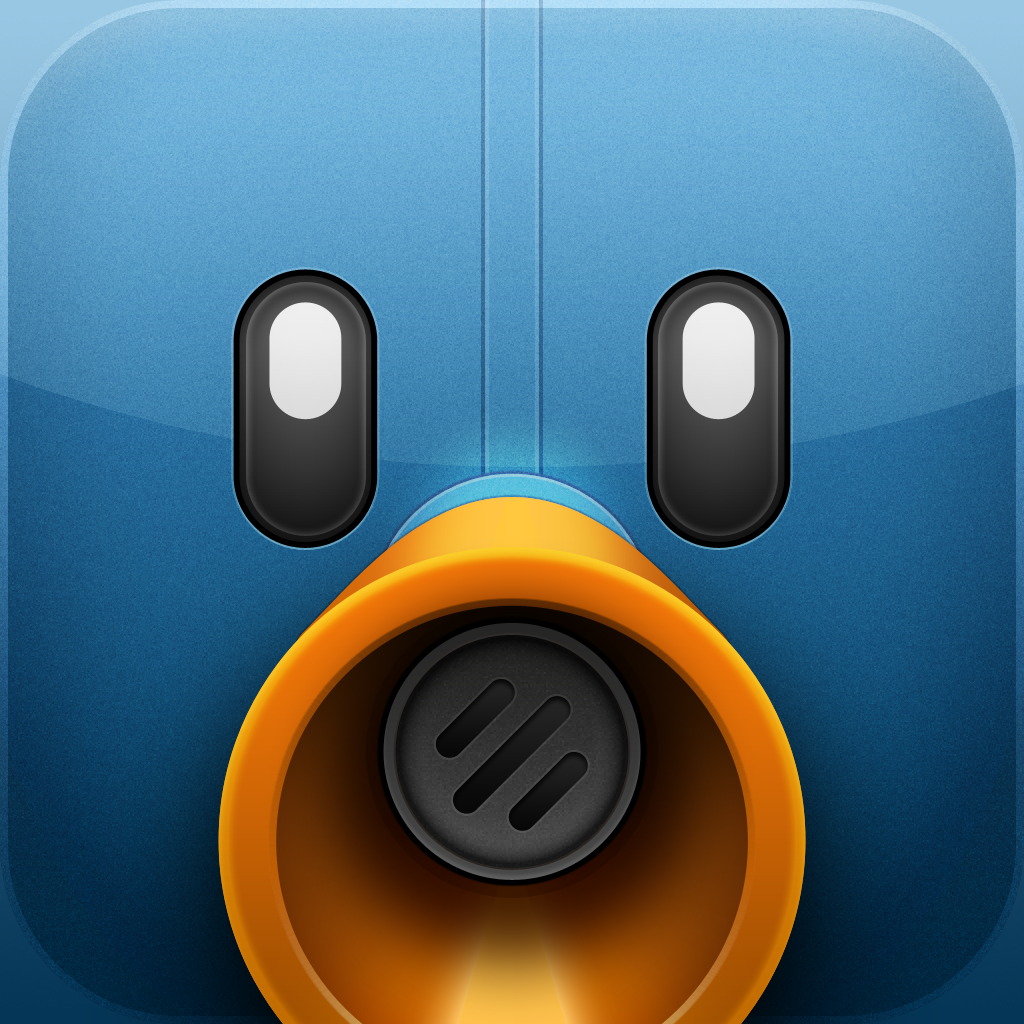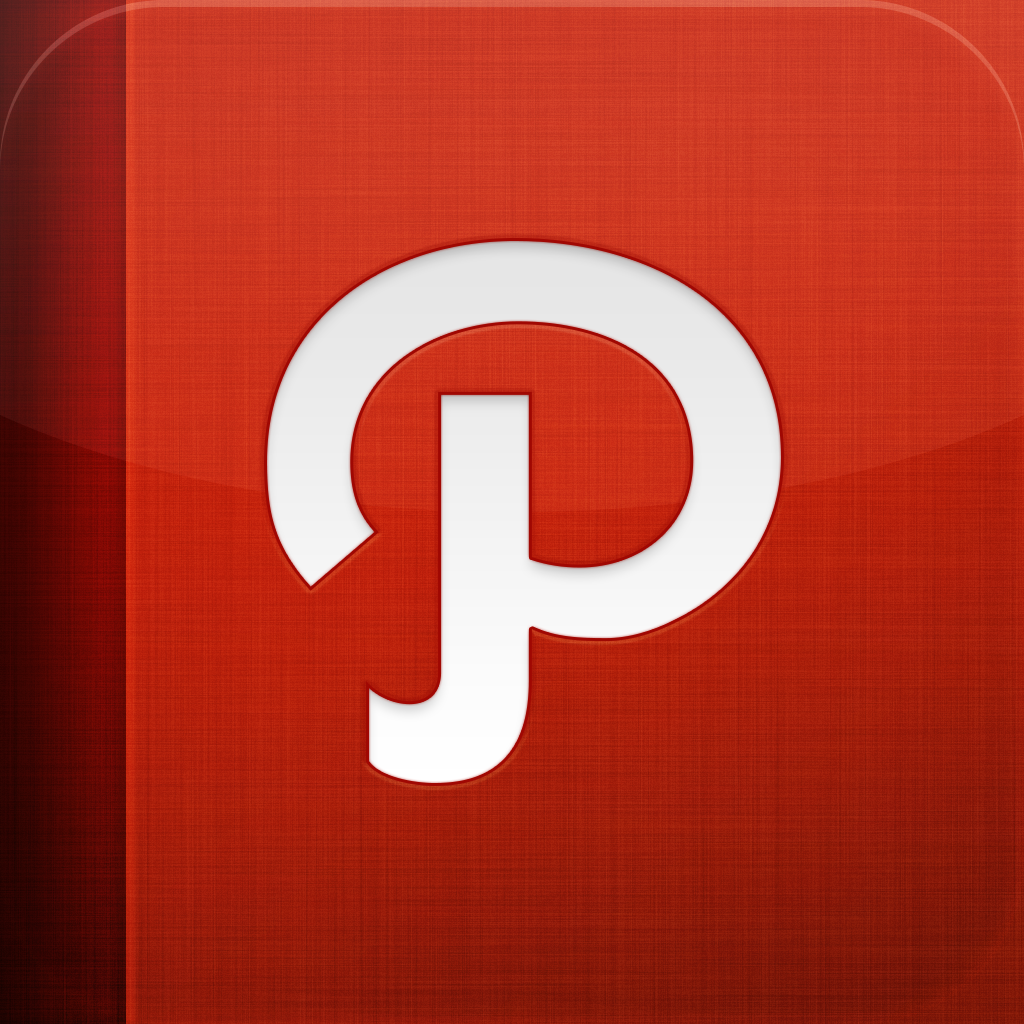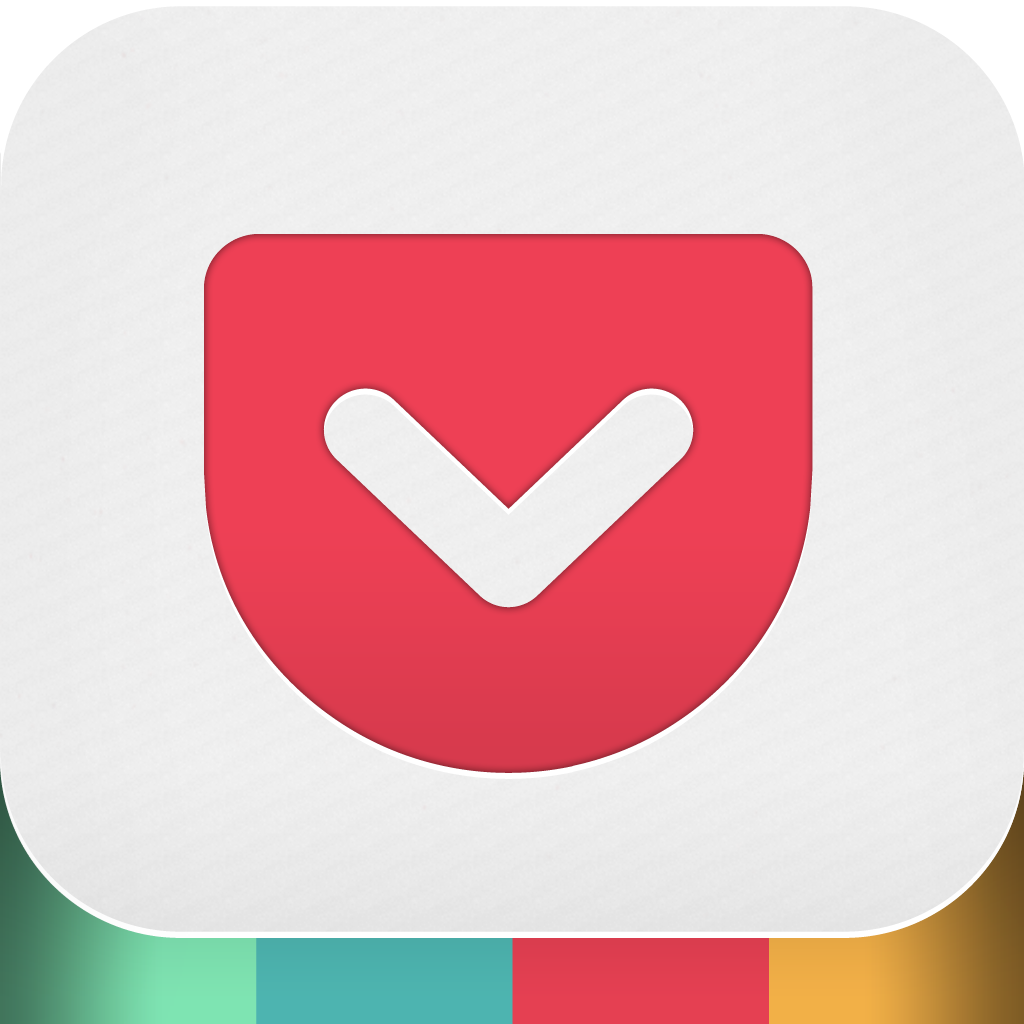
App Showdown: Netbot Vs. Felix Vs. Rivr: A Battle Of The App.net iPhone Apps
With all of the recent changes to Twitter’s API, it shined a whole new light on the premium social network, App.net (ADN for short).
So, what exactly is ADN? In a way, it’s similar to Twitter, but back in the golden days (2006–2008), when it was considered to be in its prime. The community is small but rather closely knit and friendly. There are less users than Twitter, of course, but there are no superficial celebrities on the service and there is plenty of good conversations across the entire network. This was what Twitter used to be, before it went mainstream.
In order to join ADN, you can choose from three price options: $5 a month, $36 a year (it used to be $50), or $100 for a developer account. Since ADN is a paid service, there are several core values that the founder, Dalton Caldwell, has put in place. The most important one, though, is the fact that they are selling a product, and the users are not the product. The same cannot be said for the likes of Twitter, Facebook, Google, and the like. But let’s move aside from the background of ADN and get on with the real reason we’re here …
The most important thing to any social network is a mobile app. Without it, well, most of us wouldn’t really use the service, right? I certainly don’t want to commit to a network where I can only access it with a web browser. An app is key, especially for mobile. This week, we’re going to compare the top three choices for ADN on the iPhone at the moment: Netbot from Tapbots, Felix from Tigerbears and Rivr from OmniTyke.
There can only be one, so which will be victorious? Let’s find out in this week’s App Showdown!
Cost
Netbot for iPhone
Even though Tweetbot for iPhone and iPad are $2.99 each, Tapbots have decided to raise the price for the iPhone and iPad versions of Netbot to $4.99 each. This was a bit surprising, considering how they have had the price for Tweetbot that low for so long, but users must keep in mind that ADN is a paid service, and there are less users available to pay for a mobile client.
Personally, I believe that $4.99 is the right price for a premium mobile app for a premium social network. However, if you insist on having ADN on your iPad as well, then be prepared to pay the price — about $10 — to have Netbot on both devices. Netbot is definitely a quality app — these are the same guys that made Tweetbot, after all — so it’s worth the price if you are looking for a quality client to access ADN on your iPhone or iPad.
Felix
Felix also clocks in at $4.99, which seems to be the average for the paid ADN clients.
Currently, Felix is only for the iPhone, with no iPad counterpart. Hopefully this is coming in the future. However, personally, I’m an avid user of Felix, and I believe that it is definitely worth the $4.99. It may be another $5 for you to use, but remember that an ADN membership will cost you at least $5 a month.
Rivr
Even though ADN is a paid network, that doesn’t mean that there can’t be free apps available to use as well. Rivr is a slick app to access all of the ADN goodness, but it will cost you nothing to download and use.
However, there is a premium feature in Rivr that is completely optional, but there if you want it. You can purchase a one-year premium subscription for $1.99. This subscription will get you push notifications whenever you are mentioned in a post and you can access your saved topics. Whether this is worth it is entirely up to you, though it is still an overall cheaper option than the other two apps, at least, for the first couple of years.
Interface
Netbot
Just like all of their other apps, Netbot features the distinct Tapbots look that makes their apps unique. Of course, there is always the argument that all of their apps are grossly over-designed, which is valid. However, this style is what makes Tapbots, well, Tapbots. If you’ve used Tweetbot at all, then you’ll be instantly familiar with how Netbot works.
The app features dark gradients with the signature blue for contrast. You can add multiple accounts and switch between them via the Accounts button in the top left. The main view of the app will be the Stream, and you can access the other sections via the tabs on the bottom menubar. Of course, due to current limitations with ADN, there aren’t as many sections to access, like DMs, retweets (reposts on ADN), and lists. However, you do get to access your mentions, profile, starred posts, search (with Global Stream tucked away), and mute filters.
In the Stream, your posts are differentiated by displaying your avatar on the right side, rather than the left. You can also easily see starred posts and reposts, and any attached images will be shown in an inline image preview. Mentions will be a light shade of blue so that you can easily tell them apart from the rest of your stream. The mentions tab will get a blue highlight when you have a new mention, but you won’t know how many replies you’ve received.
Viewing your profile or someone else’s is a pleasant experience in Netbot as well. The current version of Netbot’s profile view will closely resemble what is in the latest version of Tweetbot, complete with the Twitter header images. With Netbot, you will see the user’s cover image at the top, with their avatar and bio centered underneath it. You can also view how many total posts the user has made, as well as who they follow and who follows them. To check if the person follows you or not, just check the thin banner at the top. Unfortunately, though, you cannot view that user’s starred posts, if you were curious about what they saved. This shouldn’t be a problem for most people, though, so it’s nothing major.
The last two tabs are customizable for users. To do this, just tap and hold on them. You will be able to choose to display starred, search, or mute filters in the last two tabs. Switching between them is an easy task, so it’s not an issue if you need to frequently change.
Currently, Netbot does not support live streaming of your ADN stream. To fetch new posts, you will have to pull-to-refresh.
For what it’s worth, Netbot is designed just like Tweetbot, and for good reason — it’s aimed for power-users, just like its brother. It’s intuitive and packs a lot of features that make it easy to access your stream and see the posts from people you care about. And it’s all done in a familiar interface that you either love or hate. If you were an avid user of Tweetbot, then you will feel right at home with what Netbot has to offer.
Felix
While Netbot provides an interface that is already familiar, Felix provides something completely new. And while I am one of the biggest fans of Tweetbot for Twitter, I actually prefer to use Felix for ADN because it helps me keep the two networks separate from each other.
Felix has a very clean and minimal look to it, and it certainly is not overly designed like that of Netbot, so this is a plus for some people. Everything is laid out right in front of you, without the need to access hidden tabs or buttons.
The app launches into the Stream by default. All posts will be streamlined and all avatars will appear on the left hand side, including your own. But how will you differentiate your own posts from your friends? Your own posts will be highlighted in a light blue cell. Mentions will get a pale, minty green color. The other sections on the bottom menubar include your mentions, compose a new post, global, and profile. Whenever you get a new mention, a number badge appears on the tab so you know exactly how many you have waiting for you.
Like the competition, Felix also does not currently support live streaming of posts. I believe that this is still a limitation with the current API for ADN, but hopefully this will change in the future. You will have to pull-to-refresh to fetch new posts at the top, or old ones on the bottom of the stream.
The Profile views in Felix are absolutely stunning. You get the user’s cover image at the top, with their avatar overlapping over it. Their name appears underneath the banner, and you get their full bio underneath, as well as follow back status. Felix also provides three action buttons for a user: Follow (Star), Mute (Volume), and Mention (Compose). You can also see how many posts they’ve made, mentions to them, their starred posts, who follows them, and who they follow.
If you view your own profile in Felix, there are more goodies to find. You can go to specific users or hashtags, view starred conversations (a feature that seems to be unique to Felix), starred hashtags, or dimmed hashtags. The app settings are also found on your profile page.
Felix may look like a simple app at first, but don’t be fooled — this app was designed for the power-user, but it looks incredibly good doing so.
Rivr
Instead of going with a design that you would expect for a Twitter or ADN client, Rivr is more reminiscent of something like Path. Why is this? The main view, which is “My Stream,” will display your cover image at the top, just as you see your cover in Path. The entire app does not really remind me of Twitter apps, like Netbot and Felix do. I appreciate the change in design with Rivr, as it is like a breath of fresh air.
Posts will get their own cells, evenly spaced from each other. Mentions will not be differentiated in the main Stream, but you can access the slide out side panel for navigating between the various sections in Rivr, which are My Stream, Mentions, Favorites, Global, Profile, Search, and various saved hashtags. To refresh your content, just pull to refresh.
Since Rivr makes use of side panels for navigation, you can also swipe from right to left to access the “New Post” menu, which has several options that utilize ADN’s annotation features. Each post type gets a unique icon that makes it stand out from the rest, so it’s easy to differentiate between them without the need for text. Rivr makes use of ADN’s annotations feature, so you can include music, location, and even moods, which are very journal-esque.
Links are tappable in the timeline view, images get full, inline previews, and map data for geolocation is displayed as well. Rivr is very content-rich, which is why I think it is so similar to Path. Rivr is very easy-to-navigate and looks great on the eyes, which is particularly great considering that it’s a free app.
Content Interaction
Netbot
There are many ways to interact with the content in your ADN stream from Netbot, and they are all rather intuitive.
The most important gesture will be the triple tap on a post. For most, I would imagine that it would be set to the reply function, as that is probably what most people would be doing. No one wants to see a person who only reposts or stars everything, but never interacts with other members of the community, right? Regardless, no matter what you have the triple tap set to, this is one of the easiest things to remember about Netbot. If you are going to reply often, it’s the fastest way to do so.
When a post has links, @ usernames, and even hashtags, you only need to tap on them once to view the webpage, profile, or search for posts containing that hashtag. Performing a tap-and-hold on a link will bring up another menu with different options: Sending to your Read Later service of choice, posting the URL, opening in Safari, copy, or emailing the URL. Tapping on an image’s inline preview will expand it into a full screen experience.
If you tap on a post, it will reveal a tray with a contextual menu. You are able to reply, repost, star, and share the post (copy link, copy post, or email). The last button gives more options, like viewing detail, conversation, reposts, stars, and even translating if need be.
Tap on an avatar to reveal the user’s profile, where you can quickly send them a message with the “reply” button in the top corner, and you can tap the gear button to mute or follow/unfollow.
Gestures play an important part in Netbot as well. A left-to-right swipe on a post in the stream will reveal the Conversation view, where you can view all of the replies that a post receives. Swiping from right-to-left will bring up the post detail view, where you can view what the post was replying to (if applicable), and any replies that particular post received. If you get too deep into the rabbit hole by investigating new people and posts you come across, a long tap on the section button at the top will take you back to where you started from. All of these gestures are definitely neat and convenient.
Felix
Interacting with your stream’s content is also quite easy in Felix as well, and it’s a bit similar to Netbot. However, there are no inline image previews available yet, but all links can be opened with one tap, as well as usernames and hashtags.
A single tap on a post will not bring up a contextual menu, but rather just take you to the full post detail view, since there are persistent buttons that enable you to reply, repost, and star. With the detail view, there will be options for replying, reposting, starring, and even sharing (copy the post or link, and email). If you do a swipe from right-to-left on a post, it will reveal the conversation thread, showing any and all replies. A swipe from left-to-right allows you to quickly reply to a post.
Interested in a particular user? Just tap on their avatar image to reveal their profile. Buttons for quickly following/unfollowing, muting, and sending a mention to them are provided from the get-go, eliminating the need for additional taps.
Rivr
Since Rivr utilizes swiping gestures for accessing the navigational and new post side panel menus, the only way for you to interact with content in your stream is to tap on the post. Doing this will reveal a different side panel on the right hand side with five options: reply, repost (quote format), star, view conversation thread, and native repost.
Links, hashtags, and usernames will be tappable right from the stream, and supported images will get an inline preview. Not all images will show up in the stream, but the ones that do (thanks to annotation) won’t be able to get a full screen viewing mode. If you attempt to tap on the image, you are just tapping on the post, and it will bring up the menu I mentioned earlier.
Tapping on a user’s avatar will take you to their profile page, and you are able to follow/unfollow or even mute/unmute users from their profile. There’s all the other stuff you’d expect from this view, but for some reason, there is no way to quickly send that user a mention from their profile. Such a feature is available in both Netbot and Felix, so it’s odd that Rivr would choose to omit it.
Posting Features
Netbot
When you post from Netbot, you will get an experience that is the same as Tweetbot. So if you’re like me and love Tweetbot, then you should know your way around Netbot’s Compose Post screen as well.
Most of the screen will be taken up with the blank text field for you to type out your post in. Of course, if you like to take time to craft the perfect post, then you’ll be glad to know that there is full support for post drafts in Netbot — just tap on Close before publishing, and you can delete or save it as a draft. To access previously stored drafts, tap on the gear button.
For quick access to users and hashtags, just tap on the appropriate button, which will automatically insert an @ or #, respectively, and you can just start typing out the name or word. You can even upload a photo or video in Netbot with several options for source: use last photo taken (most recent image on your Camera Roll), snap a new photo or video, take a photo with Camera+, or choose from the Photo Library. All of these image or videos will be uploaded to your choice of CloudApp, Droplr, or Mobypicture.
As of this post, Netbot does not support geolocation information as it does in Tweetbot. I have no doubt that this stuff will be added in the future, as ADN changes what is available in the API.
Felix
When you compose a post in Felix, the interface is extremely clean and simple, so you can focus on posting the perfect post, or just whatever jibber jabber enters your mind. There is a header bar at the top with several options for your post, and underneath will be blank space for you to fill up with your musings. The bar will have buttons for closing the compose screen and optionally saving it as a draft, accessing your previously saved drafts, attaching a new photo or video from the camera or library, and finally sending it.
As you type, you are able to see how many characters you have remaining in the center of the top bar. There are also two options for the keyboard that can be accessed in the app’s settings, which are found in your Profile tab. You can have Twitter style, which includes shortcut @ and # keys, but no return button. Standard will include a return button for line breaks, but you’ll have to shift the keyboard to get to the @ and #. This is a matter of personal preference, but I kind of wish that there were dedicated buttons in the composing area for that. However, regardless of how you put the @ and # characters in, Felix will bring up suggestions as you type, making life just a little bit easier.
Honestly, Felix is also pretty barebones right now when it comes to other features when posting. But the minimalism goes well with the rest of the app, so it’s definitely not a bad thing. It would be nice to see geolocation information added in the future though.
Rivr
When it comes to posting content, Rivr does it the best. That’s because there are so many options, thanks to Rivr’s focus on an annotation-rich experience. To create a new post, either just give that + button a tap or slide the screen from right-to-left. There will be several options for posting content: regular text post, image, music, location, and mood. Unfortunately, Rivr does not have support for drafts, which is rather unfortunate. I hope that this can be amended in the future.
For images, Rivr is pretty great. You can import a photo from your Photo Library or even snap a new image. Once an image is selected, you can even toggle the 11 filters that Rivr comes with that you can apply directly to your photos. Images will be uploaded with the hashtag #rivrPhoto and hosted on their servers. I wish that the app could allow you to choose an image hosting service of your own, but this may not be an issue for most people.
When you go for posting music, you can search for a song among the database. When you find what you’re looking for, write a comment to go with it, and then post it. In other ADN apps, your music post will just show up as regular text (with hashtag #rivrMusic), but if you view it in Rivr, you will be able to see what the album art looks like, and even get a link to buy it directly in iTunes. I do wish that Rivr would play a preview of the song, like how Path does it, because currently there is no way for other users to preview it from the app — they will have to go into iTunes.
The Location post allows you to find nearby places, that is, if you have Location Services turned on. If you can’t find the place you want, you can also manually add it in. When a place is selected, add some text about it, and then publish. In Rivr, location posts will display a Google Maps image, whereas other apps will only see plain text. Like all of the other post types in Rivr, location will get #rivrPlace.
The final post type for Rivr is Mood, and it definitely gives it that Path/Livejournal feel (surprisingly, LJ is actually still around). You can pick from six moods: Happy, Sad, Angry, Calm, Tired, and “OMG.” Selecting one will automatically post it. Rivr users will see the giant emoticon representing your mood, while users with other apps will only see regular text once again. These posts will be tagged with #rivrMood. I don’t plan to use this feature much, but it would be great to see more than six moods — after all, there are more than six emotions that humans experience, right?
If you are looking to get the most out of your posts on ADN, then Rivr will help you with that. The only problem is that these posts will look best in the app, and not so much with others. Be careful with how many different post types you post with Rivr, because it look like spam to others.
“With great power comes great responsibility.”
Push Notifications
Netbot
With the latest 1.1 update to Netbot, it finally gained push notifications. To enable them, you will have to navigate to your account settings, and then to Notifications. The best part about Netbot is the fact that you can get notifications for four different things: Mentions, Reposts, Stars, and Follows. It’s definitely comprehensive, and relatively fast.
The only thing that it is currently missing are the sleep options for notifications. Hopefully this will be added in the future.
Felix
Felix has push notifications, and they are quite a delight. To enable them, just mosey your way over to the app’s settings and find the “Push @mentions” option.
From my experience, Felix has been the app that delivers notifications of new mentions right away. Other apps usually lagged behind Felix by a few moments. It also has one of the most pleasant notification sounds that isn’t just “another alert.” It’s a sound that is easy on the ears, so you’ll love to hear it each time. At least, this was the case with me. Your mileage may vary, but it is still a unique sound for sure.
Rivr
Since Rivr is a free download, the developers have to get money somehow. And that is through the premium subscription I mentioned earlier, which includes push notifications for @ mentions and saved topic access.
The subscription is a reasonable $1.99 a year, though it is entirely up to the user to deem if it is worthy. If you do get it, the notifications show up pretty quickly after you get a mention.
Settings: Make the App Work for You
Netbot
Just like the Twitter counterpart, Netbot gives you full control of how you want your ADN experience to be. The Settings panel is on the same screen where you manage your accounts, and there are a myriad of options available. You can toggle the sounds on and off (but the sounds are lovely, why would you want them off?), change the font size, display name, date format, and new posts bar in the Display section, choose your quote format for reposts, pick an action for when you triple tap a post, and even post in the background (hide the compose screen as your post is going through).
These are just general settings. Netbot also provides settings that you can apply to individual accounts, which is incredibly useful for those who have multiple names on the site. With the individual account settings, users are able to toggle notifications (as mentioned earlier), and choose the services they want to use for URL shortening, image and video uploads, reading links later, sync, and the mobilizer view.
For URLs, you can choose from the following shortener services: bit.ly, bitly Pro, CloudApp, Droplr, j.mp, TinyURL, or even use your custom domain. Images and videos are through CloudApp, Droplr, or Mobypicture. Read Later services include bitly Pro, Instapaper, Pinboard, Pocket, and Readability. The Mobilizer view can be done through Google, Instapaper, or Readability. Despite my dislike for Readability, I have to admit that their mobilizer view really does beat out the competition.
The Sync makes it so that your position in the stream is the same across both the iPhone and iPad versions of Netbot (and I’m assuming a Mac version in the future). The option to have a visual marker indicator on the stream is available as well, which I have found to be quite handy.
If, at any time, you want to reset the cache for your stream, tap on that big ol’ red button in the account settings. You can dump out whatever was in the cache and start fresh.
Felix
Felix, despite the overall clean and somewhat minimalistic design, actually does pack quite a wallop when it comes to settings. You will find the settings to be split into several categories: General, Push Notifications, My Stream, Composing Posts, Coversations and Threading, Media Sharing, and Saving Web Content.
General will have options for text size and how many posts to fetch per refresh. Notifications will just be for @ mentions, and My Stream has the option to display all @ replies in your stream or just limit it to people you follow only — all mentions can be seen from the Mentions view.
One of my favorite things about Felix is the fact that the app supports TextExpander, as long as you have the app installed on your device and have sharing turned on. For conversations and threads, you can choose the default repost style, keyboard for composing posts, sort threads by newest first, and alternate row colors to differentiate easier.
When it comes to media, you can choose to use CloudApp or Droplr, and for saving web content for later, you can use Instapaper, Pocket, or Readability.
Felix remains my go-to app because there are plenty of settings to make the app really feel like yours. Oh, and having TextExpander support is really fantastic.
Rivr
Despite being the most feature-rich for posting out of the apps being compared, Rivr’s settings are pretty barebones. It will be split into different sections: Posting, General UI, Camera, Read Later Accounts, and Notifications.
The Posting section will only have a toggle for including everyone in a reply. General UI contains options like using the hashtag keyboard, show @directed posts, change font size, how many posts to fetch, and a toggle for opening links in Chrome. Camera has three settings for saving photos to the Library, whether or not to save original photos, and remembering the last filter used. You can log in to either your Pocket or Instapaper account for Read Later, and change how Rivr handles your notifications if you are a premium subscriber.
Again, pretty barebones. There are no options to change where your media gets uploaded to, or shortening links. However, for most people, this may not be that big of an issue.
The Winner
Out of these three apps, I believe that Felix is still by far one of the best apps you can buy for ADN. I’ve always been a huge Tweetbot fan, but I actually prefer to keep my Twitter and ADN experiences separate, so I welcome the refreshing and different interface of Felix with open arms.
And it’s not just an invigorating new look that makes Felix the top choice for me, either. It’s the fact that it makes browsing ADN a breeze, and packs quite a powerful feature set as well, all in a beautiful package that completely separates it from your Twitter life. And the notifications? Well, it’s pretty soothing to hear that sound every time you get an @ mention.
For the moment, Felix remains my top choice for ADN on your iPhone, and has earned it’s spot on my home screen. However, there are many more ADN apps coming in the pipeline, so who knows what I’ll be using several weeks from now. Perhaps it may even warrant another App Showdown …
Are you a member of App.net? What is your current app of choice on your iPhone? For future App Showdown ideas, make sure to drop a line at christinechan@appadvice.com.
